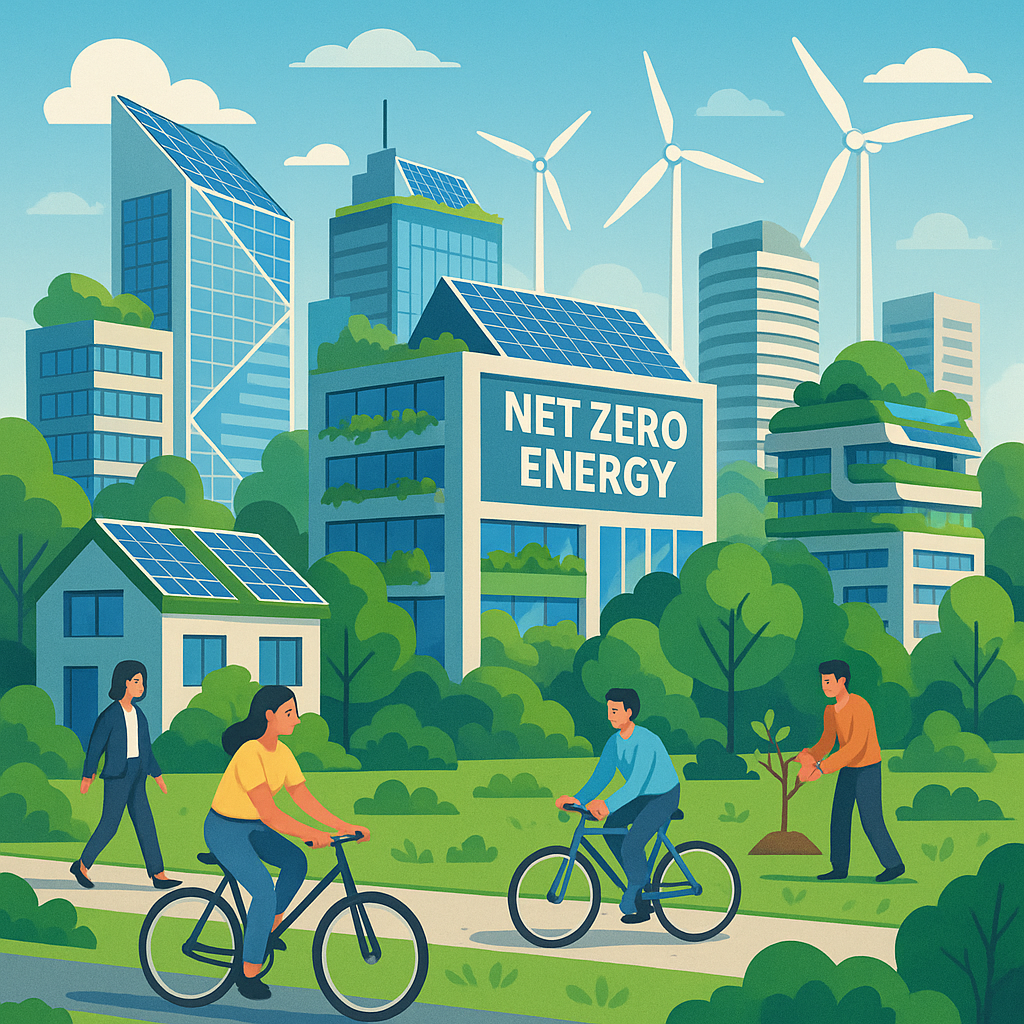Climate change worries more people every day pushing many industries to seek green solutions. One big idea gaining traction is net-zero buildings—structures designed to produce as much energy as they use. Let’s explore what these buildings are and how they help protect our planet.
What Does “Net-Zero” Mean?
A net-zero building balances its energy use with the energy it generates. This means it creates enough clean energy (like solar or wind) to run lights, heating, cooling, and other systems. Over a year, the energy it takes from the grid matches the energy it gives back.
Why Are Net-Zero Buildings Important?
Buildings worldwide consume a lot of energy often sourced from fossil fuels that pollute the environment. Net-zero buildings help address this issue by:
- Reducing energy consumption through clever designs and tech
- Producing clean energy on-site
- Reducing carbon emissions that damage the planet
- Decreasing utility costs for homeowners and companies
In a nutshell, they benefit both the environment and the pocket.
Main Features of a Net-Zero Building
Building a net-zero structure involves more than just adding solar panels. It requires careful planning and appropriate materials. Here’s what defines a net-zero building:
1. Energy-Efficient Construction
Builders design walls, windows, and roofs to keep heat in during winter and out during summer. Better insulation cuts down on heating and cooling needs.
2. Smart Lighting and Appliances
LED lights and energy-saving appliances help reduce power consumption.
3. On-Site Renewable Energy
Net-zero buildings often rely on solar panels, while some use wind turbines or geothermal systems to generate clean energy.
4. Advanced Heating & Cooling
New HVAC systems consume less power and operate with greater efficiency.
5. Energy Monitoring Systems
Smart devices monitor energy consumption and offer suggestions to cut down on waste.
Green Building Materials Are Important Too
Net-zero buildings often use eco-friendly materials such as bamboo recycled metal, and non-toxic paints. These materials are better for people and the environment. Builders might also use pre-made components, which result in less construction waste.
Obstacles in Achieving Net-Zero
While the advantages are obvious constructing net-zero buildings faces several hurdles:
- Increased initial expenses because of superior materials and technology
- Requirement for experts who know green building techniques
- Limited understanding among some property owners and developers
But as net-zero awareness grows and tech costs drop, these obstacles are fading away.
Engineers and Their Impact
Every net-zero structure relies on a group of engineers who make it efficient and workable. They create:
- Power systems that consume less energy
- Insulation that maintains steady temperatures
- Clever water setups that recycle water
- Clean power sources such as solar arrays
Their efforts transform green concepts into actual buildings where people can live and work.
Net-Zero Buildings in Action
Some impressive net-zero structures are already making an impact:
- The Bullitt Center in Seattle – people call it one of the world’s greenest office buildings
- The Edge in Amsterdam – relies on solar power and smart technology to cut down on energy use
- ZNE Schools in California – public schools that run on renewable energy
These examples show that net-zero isn’t just wishful thinking—it’s already a reality.
